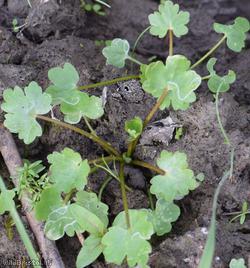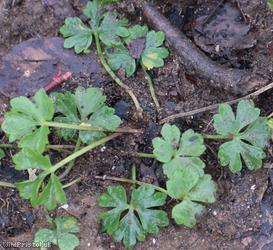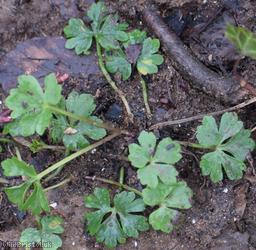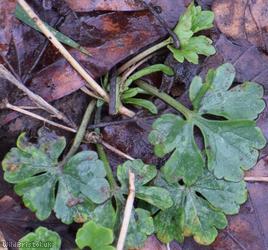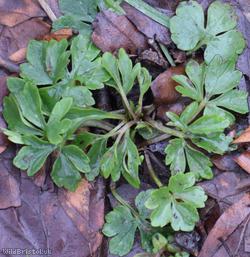Celery-leaved Buttercup - Ranunculus sceleratus
Favourite Photos
Species Description
Widespread and locally frequent throughout the UK. Habitat includes: Wet places such as marshes, wet meadows, margins of ponds, lakes, streams, ditches etc.
Stace 4:
Ranunculus sceleratus L. - Celery-leaved Buttercup.
Erect annual to 60cm; lower leaves deeply 3-lobed, more or less glabrous, shiny; flowers 5-10mm across; sepals strongly reflexed at anthesis; achenes about 1mm, glabrous, smooth, with vestigial beak; 2n=32. Native; in marshy fields, ditches, ponds and streamsides; frequent throughout England and Channel Islands but more scattered and mostly coastal in Scotland, Wales and Ireland.
Key:
- Petals yellow; achenes not transversely ridged
- At least some leaves divided at least 1/4 way to base
- Sepals strongly reflexed at anthesis
- Plant annual, without swollen stem-base
- Achenes about 1mm, on elongated receptacle, more or less smooth on sides
